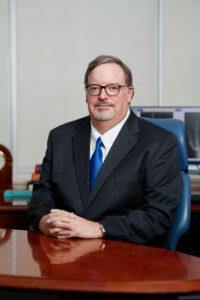As the newly named editor in chief of A&R, the ACR’s flagship journal, S. Louis Bridges Jr., MD, PhD, looks forward to continuing its coverage of advanced technologies, new therapy alternatives and clinical issues, while expanding its global appeal and engaging readers through expanded interactive services.
Dr. Bridges is physician in chief and chair of the Department of Medicine and the Franchellie M. Cadwell Professor of Medicine at the Hospital for Special Surgery (HSS), New York, as well as chief of the Division of Rheumatology at both HSS and Weill Cornell Medical College. His new role on A&R adds to a long list of volunteer positions he has held over the years, including president of the Rheumatology Research Foundation, member of the ACR Executive Committee, chair of the ACR Committee on Research and chair of the Arthritis and Musculoskeletal and Skin Diseases Study Section for the National Institute of Arthritis and Musculoskeletal and Skin Diseases.
While preparing to begin his five-year term as A&R’s editor in chief, Dr. Bridges reflected on his background and interest in rheumatology-related volunteering, including journal editing, and shared his thoughts about continuing the journal’s evolution as a timely and important publication, one with clear benefits for both rheumatology researchers and clinicians.
The Rheumatologist (TR): What has been your journey in the rheumatology field?
Dr. Bridges: I grew up in rural Louisiana. I got my bachelor’s from the University of Notre Dame and my medical degree from the Louisiana State University School of Medicine before doing my internship and residency in internal medicine at the University of Texas Medical Branch. Then I did my fellowship in the Division of Clinical Immunology and Rheumatology at the University of Alabama at Birmingham (UAB), and that’s where I became interested in research and ended up getting a PhD in microbiology following my rheumatology fellowship. From there, I started a research lab program of my own.
TR: How did that transition into an interest in moving toward leadership?
Dr. Bridges: When I was a researcher, I started thinking about possible leadership roles, and it just went from there. I became involved in voluntary positions for the ACR, which I have continued for most of my career. I [was] director of the Division of Clinical Immunology and Rheumatology at UAB for 12 years (2008–20), and in 2020, I joined HSS—I signed on just a couple of months before the pandemic was declared. Being chair of medicine at HSS is very different from most other departments of medicine because our entire hospital is focused on musculoskeletal medicine: We have doctors specializing in metabolic bone disorders, infectious diseases and perioperative medicine, and both adult and pediatric rheumatologists. We rely on our colleagues across the street at Weill Cornell Medical College to provide coverage of other subspecialities.



